Bee-Thoven Organic Bee Farm
Bee-Thoven, Award Winning Greek Organic Honey

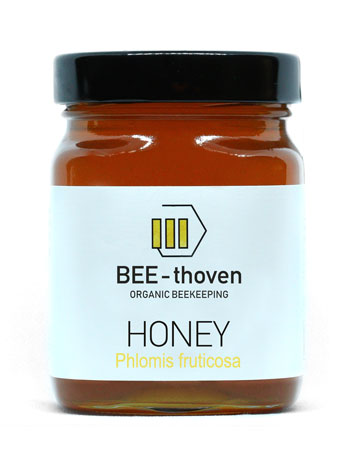
Phlomis fruticosa
Phlomis fruticosa (a.k.a. Jerusalem sage) is a small evergreen shrub, growing mostly in rock terrain and reaching up to 5 feet tall. It blossoms from the end of March and it is harvested within the region of Xiromero, Aetolia-Acarnania prefecture. It’s honey is considered of TOP quality, thin crystal and clear, with a magnificent aroma. The honey’s light taste makes it very popular among children.

Oak
The oak (Quercus) is a perennial tree, growing all over Greece. Oak honey is thick and black coloured. It is characterised by a smooth and sweet taste. Carbohydrates, and especially fructose and glucose, consist over 70% of its mass. It also contains the most antioxidants compared to all other honeys. Its crystallisation takes gradually place rather slow.
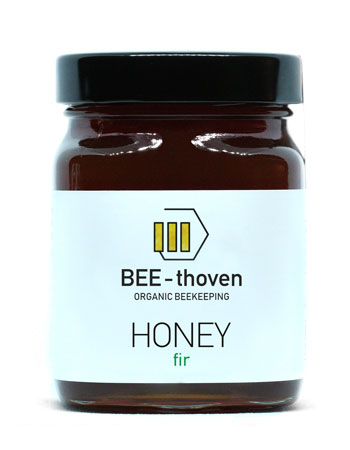
Fir
Fir (Abies) is a genus of coniferous tree. It’s characteristic, needle-like leaves, secrete the honeydew. The bees process the honeydew nectar into a high viscous, deep reddish honey, with a discrete aroma. It is harvested in the high mountain range of Pindos. It never crystallises due to its low concentration in glucose. Very rich in nutrients. It contains minimal quantity of vitamins, which thus trigger a more efficient absorbance of sucrose from the human body.
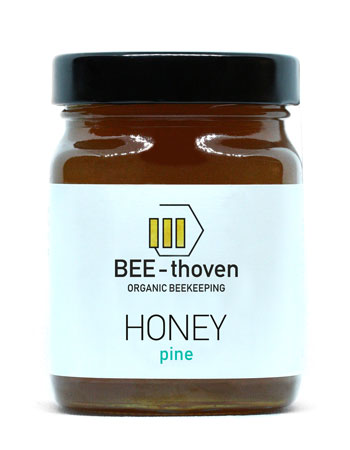
Pine
The pine (Pinus) honey is not very sweet, due to its low sucrose concentration. Its colour is darker than the usual golden coloured flower honeys, and may vary, depending on the harvesting region and season. For instance, the honey produced during spring time is clearer compared to the one in fall. It owes its high nutritional value to the presence of consisting minerals and nutrients (calcium, magnesium, zinc, ferrum, copper, etc.)

Forest honey
Honey mixtures from diverse flowering seasons. Mother Nature offers generously her gifts: flowers, herbs and trees, such as Paliurus, Trifolium, Cercis, Prunus, wild Pyrus, Onopordum, Asphodelus, Origanum, Parietaria, Rubus and many more. Honey with vivid colours and unique tastes, just as naturally mixed by the bees. The harvesting takes strictly place at the mountains of Epirus.
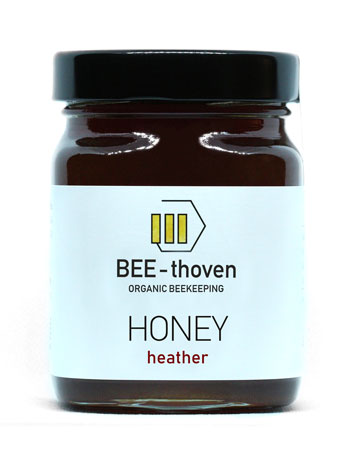
Erica
Erica (Erica manipuliflora) is a small shrub with purple flowers, blossoming during autumn time. It is harvested from early October in the gorges and evergreen hillsides of south Pindus Mountains and within the region of Valtos (Aetolia-Acarnania prefecture), to an elevation ranging from 600 to 800 meters. The Erica honey has a coper colour, vivid aroma and fruity taste.

Tymus
The common thyme plant (Thymus vulgaris) contains over 25% essential oil, where the main ingredient is thymol. It’s antiseptic action passes as well through the honey, which is considered of TOP quality within the Hellenic region, exceptionally aromatic and with high nutritional value. It could take more than a year to crystallise. It has an intensive, strong taste, which might give a slight “burning” feeling to the larynx, due to the peak concentration in fructose. It is firmly dense, by absorbing low humidity amounts; the colour varies from amber to blonde.
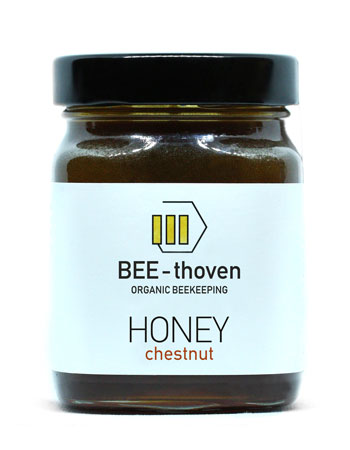
Chestnut
The chestnut (Castanea) produces its nectar on the flower stems, as well as honeydew on its leaves thanks to the aphid foliar insect Myzocallis castanicola. The honey’s colour may vary, depending on the production region: from golden up to dark brown. It possesses an intensive aroma and strong, slightly bitter taste. It is rich in nutrients, fructose and tannins; furthermore, it has a high concentration of minerals.
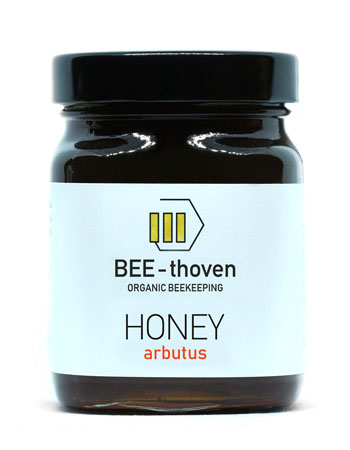
Western strawberry shrub
The western strawberry shrub (Arbutus unedo) has flower buds, flowers and ripe fruits blossom and grow at the same time. This dark yellow honey has an average viscosity and a rather bitter taste. It has the lowest glucose content, and therefore fewer calories. With low fructose content as well, it is highly recommended for people going on a diet. It contains the glycoside arbutin, which regulates the cholesterol, as well as turanose, which extends the cells lifetime.
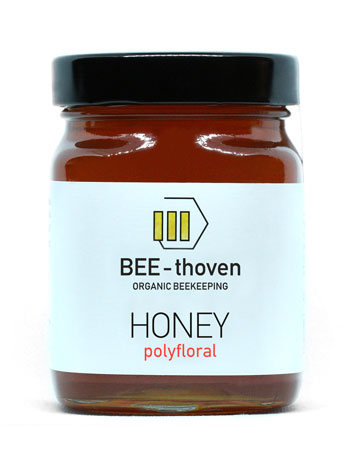
Mixed flower honey
Mixed flower honey: Honey mixtures from diverse flowering seasons. Mother Nature offers generously her gifts: flowers, herbs and trees, such as Paliurus, Trifolium, Cercis, Prunus, wild Pyrus, Onopordum, Asphodelus, Origanum, Parietaria, Rubus and many more. Honey with vivid colours and unique tastes, just as naturally mixed by the bees. The harvesting takes strictly place at the mountains of Epirus.
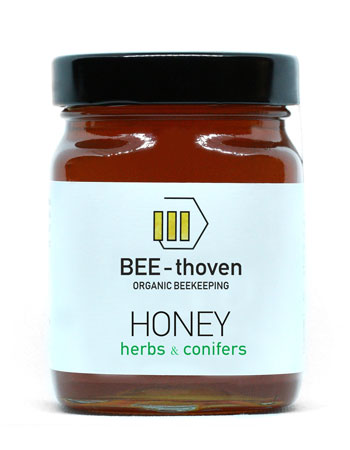
Herbs & Conifers
Στα ελατοδάση των Βαρδουσίων βρίσκουμε τις ζητούμενες ανθοφορίες. Σε υψόμετρο που υπερβαίνει τα 1300 μ. συλλέγεται, κατά την διάρκεια του καλοκαιριού, νέκταρ από ρίγανη, τσάι και βαλσαμόχορτο. Από αγριοτρίφυλλο και περδικάκι. Μαζί με το μέλι της ελάτης και της καστανιάς γίνεται ένα πολύ ιδιαίτερα γευστικό και αρωματικό μείγμα, όπως η μέλισσα ξέρει να φτιάχνει!

Honey cream
Our honey cream is made from 100% untreated organic honey, without additives or preservatives. It consists of exceptional honey varieties, harvested from the spring flowers of the local mountains. We take advantage of the natural crystallization process, which does not alter the honey composition or nutrients, achieving a smooth, velvety taste..
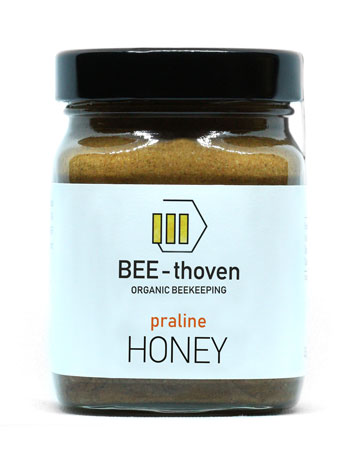
Honey praline
The praline consists of 80% polyfloral honey (proudly harvested from the high mountains of Epirus), wholegrain tahini, raw hazelnuts, cocoa and organic gooseberry, which is considered to be of great nutritional value. We ensure a high quality product, as the only liquid fat of our praline originates from the natural sesame oil of tahini, known for its beneficial and energizing properties for the human body.
